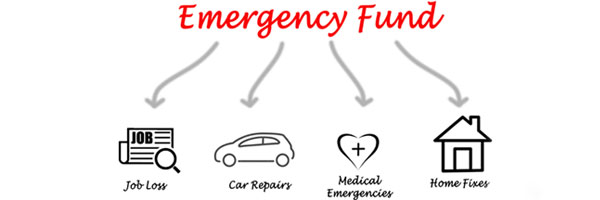
This lesson uses a Better Money Habits video to explain why creating an emergency fund is important, especially when confronted with unexpected costs.
Introduction
This lesson uses the Better Money Habits video Create a Safety Net for Life’s Unexpected Events to explain why creating an emergency fund is important, especially when confronted with unexpected costs. It can be used in conjunction with Lesson 20: What’s the Cost of Spending and Saving? in Financial Fitness for Life, Grades 9-12 . The video is approximately 6 minutes and completing the activities in this lesson requires one 45 minute class period.
The activities included in this lesson are designed to be incorporated into Lesson 20 by adding the concept of establishing an emergency savings account as part of a savings plan. This lesson encourages students to have a plan in place for creating a safety net to protect against unexpected debt in case of a financial emergency. It also discusses ways to build a savings account and maintain liquidity for easy access.
Learning Objectives
- Identify an actual emergency spending scenario in their life.
- Prepare a plan for dealing with potential emergencies.
- Understand the risks of not having an emergency fund.
- Know how to begin an emergency fund.
- List ideas on how to increase your savings.
Process
- Complete Procedures 1-6 in Lesson 20: What’s the Cost of Spending and Saving? Distribute Handout 10.1 and ask students to complete the first question. Ask students to share their answers with the rest of the class.
- Ask students if they have heard about having an emergency fund and if they know what its purpose is. Explain they are going to watch a brief video that illustrates the importance of creating an emergency fund and how it can serve as a financial safety net when faced with unexpected expenses.
- Tell students the answers to the remaining questions on Handout 10.1 will be given during the video; have them fill in the blanks as a guide to watching the video.
- After watching the video, put students in small groups to discuss the video and review their answers on the worksheet. Have each group prepare a 30 second commercial to share with the class using the information presented in the video. Allow each group time to present their video to the class.
- Debrief the activity by asking students what they learned from watching the video and the class commercials. Ask students if they would change any of their answers to Question 7 on the handout.
- Complete the remaining Procedures in Lesson 20.
Conclusion
Extension Activity
View additional Better Money Habits videos on Savings and Budgeting . Be sure to preview each video to determine if it is appropriate content for your students.